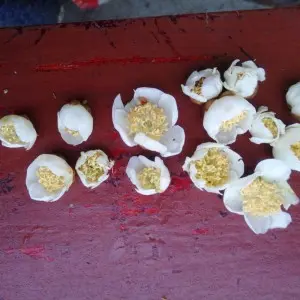Pro . 01, 2024 23:14 Back to list
advanced pollination methods of pear trees service
Advanced Pollination Methods of Pear Trees
Pollination is a critical process for the successful cultivation of pear trees, a staple fruit in many regions around the world. Unlike many other fruit trees that can self-pollinate, pear trees often require cross-pollination for optimal fruit set and quality. This has led to the development of advanced pollination methods to enhance fruit production, ensuring that growers can maximize their yields while maintaining the health of their orchards.
Understanding Pear Tree Pollination
Pear trees are generally divided into two categories European (Pyrus communis) and Asian pears (Pyrus pyrifolia). Most species within these categories require pollen from a different tree variety for successful fertilization. As such, it is essential for orchard managers to select compatible pollinators that will blossom at the same time as their primary pear trees. The timing and overlap of blooming periods play a pivotal role in ensuring that bees can transfer pollen effectively from one tree to another.
Traditional Pollination Techniques
Historically, pollination has relied heavily on the natural activity of pollinators, especially bees. Beekeeping practices have been essential for ensuring that sufficient bee populations are present in pear orchards during the blooming period. However, this traditional method can sometimes be insufficient due to factors such as environmental changes, pesticide use, and the decline of bee populations.
Advanced Pollination Methods
To address these challenges, modern agriculture has embraced advanced pollination methods that utilize technology and scientific techniques to improve the pollination rates of pear trees.
1. Drone Pollination
One breakthrough in pollination technology is the use of drones equipped with artificial intelligence and specialized equipment to mimic the natural pollination process. These drones can assess the blooming status of pear trees and disperse pollen over large areas, thus promoting cross-pollination. Research shows that drone-assisted pollination can effectively augment traditional methods, especially in areas where bee populations are declining.
advanced pollination methods of pear trees service

2. Controlled Pollination Environments
Creating controlled environments, such as high tunnels or greenhouses, allows for the manipulation of temperature and humidity to optimize blooming and improve pollination success rates. Within these controlled conditions, growers can introduce compatible pollen at the right time, ensuring better fruit set. This method also allows for the reduction of pests and disease, thereby improving overall tree health.
3. Pollen Management Techniques
Pollen management has gained attention as a method to enhance pollination efficiency. This involves carefully collecting and storing pollen from desirable varieties to be applied later during peak bloom times. Techniques include cryopreservation for long-term storage, which ensures that high-quality pollen is available when needed.
4. Use of Pollinator-Friendly Practices
Incorporating practices that encourage the health and diversity of natural pollinator populations can significantly benefit pear orchards. This includes planting native flowering plants nearby to provide supplemental food sources for pollinators, reducing pesticide use, and creating habitats that support bees and other beneficial insects.
5. Genetic Research
Advancements in genetic research are paving the way for the development of new pear cultivars that are better adapted for pollination. By understanding the genetics behind pollination compatibility, breeders can develop new varieties that can thrive in various ecosystems while maintaining high yields.
Conclusion
The advanced pollination methods employed in pear tree cultivation underscore the importance of innovation in agriculture. As the challenges related to pollination continue to grow, especially with changing climates and declining natural pollinator populations, the integration of technology and sustainable practices becomes critical. By combining traditional methods with these advanced techniques, farmers can secure better yields, enhance the quality of their fruit, and contribute to the overall resilience of the pear industry. The future of pear cultivation lies in the smart and strategic application of these methodologies, ensuring that future generations can continue to enjoy this beloved fruit.
-
Artificial Pollination Solutions for Pear Trees Auxiliary Pollination Services & Pricelist
NewsJun.10,2025
-
Bagging Paper Bag for Fruit - Wholesale Suppliers & Manufacturers for Fruit Factories
NewsJun.10,2025
-
Premium Apple Birch Tree Pollen Suppliers Quality Exporters
NewsJun.09,2025
-
Lorado Pollen Suppliers Pure Apricot Flower Pollen Collection
NewsJun.09,2025
-
Premium Mulberry Pollen Natural Source for Bee Health & Nutrition
NewsJun.09,2025
-
Optimize Cross Pollination Functions Top Manufacturers & Suppliers
NewsJun.09,2025